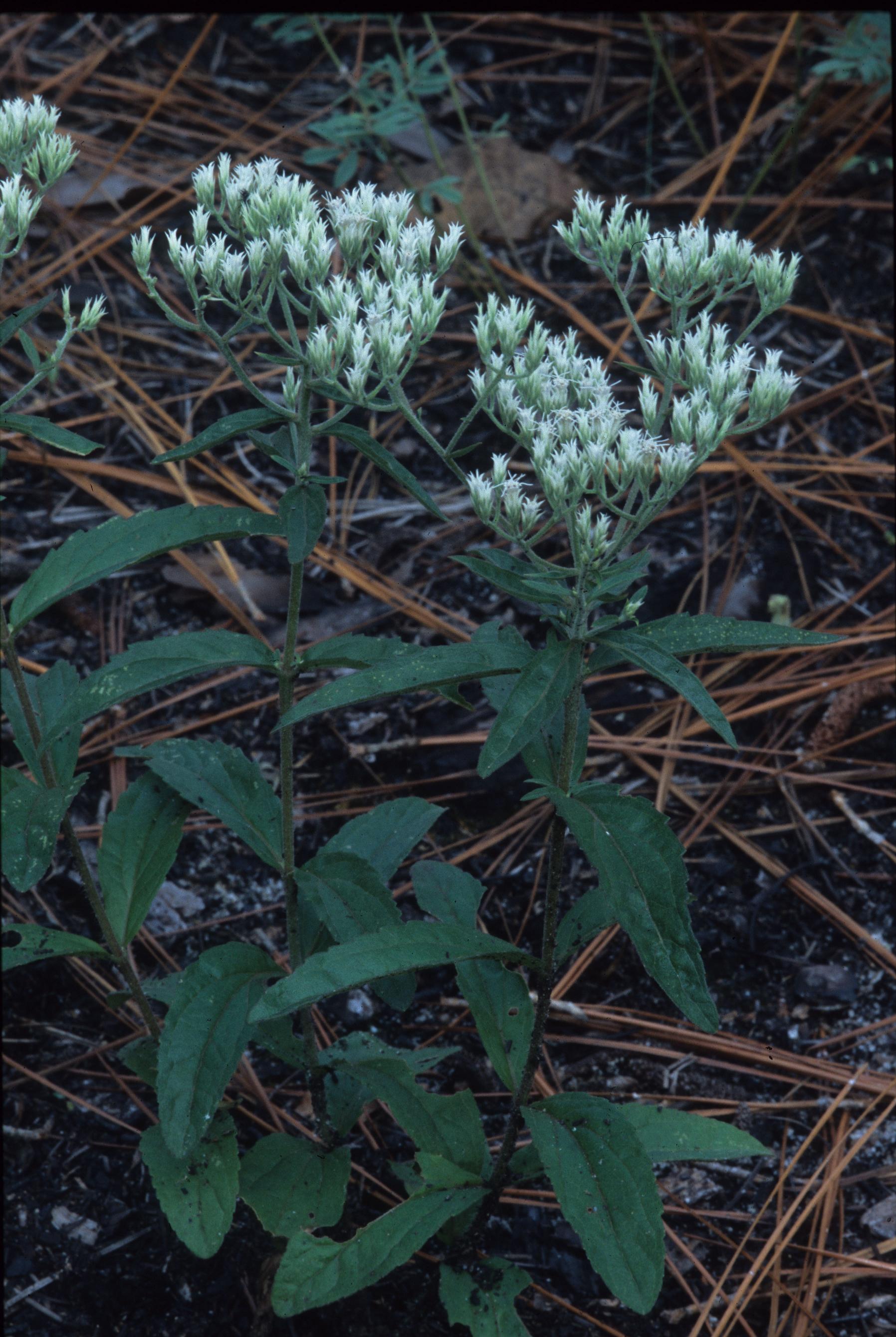Difference between revisions of "Eupatorium album"
(→Distribution) |
|||
| Line 26: | Line 26: | ||
==Distribution== | ==Distribution== | ||
| + | ''Eupatorium album'' can be found from Connecticut, New York, Ohio, and Tennessee south to Florida and Louisiana.<ref name= "Weakley">Weakley, A. S. (2015). Flora of the Southern and Mid-Atlantic States. Chapel Hill, NC, University of North Carolina Herbarium.</ref> | ||
| + | |||
==Ecology== | ==Ecology== | ||
===Habitat=== <!--Natural communities, human disturbed habitats, topography, hydrology, soils, light, fire regime requirements for removal of competition, etc.--> | ===Habitat=== <!--Natural communities, human disturbed habitats, topography, hydrology, soils, light, fire regime requirements for removal of competition, etc.--> | ||
Revision as of 13:31, 10 May 2019
| Eupatorium album | |
|---|---|

| |
| Photo was taken by Gil Nelson | |
| Scientific classification | |
| Kingdom: | Plantae |
| Division: | Magnoliophyta - Flowering plants |
| Class: | Magnoliopsida – Dicotyledons |
| Order: | Asterales |
| Family: | Asteraceae ⁄ Compositae |
| Genus: | Eupatorium |
| Species: | E. album |
| Binomial name | |
| Eupatorium album L. | |

| |
| Natural range of Eupatorium album from USDA NRCS Plants Database. | |
Common name: white thoroughwort; white-bracted thoroughwort
Contents
Taxonomic notes
Synonyms: Eupatorium album Linnaeus var. album; E. album var. glandulosum (Michaux) A.P. de Candolle
Description
A description of Eupatorium album is provided in The Flora of North America.
Distribution
Eupatorium album can be found from Connecticut, New York, Ohio, and Tennessee south to Florida and Louisiana.[1]
Ecology
Habitat
It is found in sandhills, Longleaf pine-wiregrass savannas, evergreen scrub oak sand ridges, pine flatwoods, old fields, flatwoods, hammocks, seepage slopes, pine-palmetto flatwoods, in woods adjacent to sinkholes, and in well-drained Longleaf pinelands. It is also found in human disturbed areas such as roadsides, areas that have been clear cut, clobbered, bulldozed, and in powerline corridors. It requires open to semi-shaded areas. It is associated with areas that have drying-loamy sand, wet-sandy loam, dry sand, gray-sand loam, dry-sparsely loamy sand soil types.[2] It does well in open canopy areas on longleaf pine habitats and does okay in areas that have been clear cut. [3] It is found in longleaf pine sandhill communities. [4]
Associated species include Eupatorium recurvans, E. mikanioides, E. rotundifolium, E. anomalum, E. compositifolium, E. aromaticum, Chamaecrista fasciculata, Sassafras albidum, Pteridium aquilinum, Quercus incana, Q laevis, Aristida beyrichiana, Serenoa repens, Ilex glabra, Rhynchospora, Xyris, Magnolia virginiana, E. rotundifolium, Solidago odora, Liatris gracilis, L. tenuifolia, L. elegans,Sericocarpus tortifolius, Rubus cuneufolius, Andropogon ternarius, Carphephorus corymbosus.[2]
Phenology
It has been observed flowering from July to November.[2] Kevin Robertson has observed this species flower within three months of burning. KMR
Seed dispersal
This species is thought to be dispersed by wind. [5]
Fire ecology
It flowers within three months of burning in the early spring to early summer. KMR
Conservation and management
Cultivation and restoration
Photo Gallery
References and notes
- ↑ Weakley, A. S. (2015). Flora of the Southern and Mid-Atlantic States. Chapel Hill, NC, University of North Carolina Herbarium.
- ↑ 2.0 2.1 2.2 Florida State University Robert K. Godfrey Herbarium database. URL: http://herbarium.bio.fsu.edu. Last accessed: June 2014. Collectors: Loran C. Anderson, R.K. Godfrey, Robert L. Lazor, John Lazor, J. P. Gillespie, R. Kral, Victoria I. Sullivan, Brenda Herring, Don Herring, Delzie Demaree, Nancy E. Jordan, R. F. Doren, R. E. Perdue, S. C. Hood, Paul L. Redfearn, Jr., R. A. Norris, and R. Komarek. States and Counties: Florida: Bay, Calhoun, Citrus, Clay, Columbia, Escambia, Franklin, Gadsden, Gulf, Jackson, Jefferson, Lafayette, Leon, Levy, Liberty, Madison, Marion, Okaloosa, Santa Rosa, Taylor, Wakulla, and Washington. Georgia: Thomas.
- ↑ Brockway, D. G. and C. E. Lewis (2003). "Influence of deer, cattle grazing and timber harvest on plant species diversity in a longleaf pine bluestem ecosystem." Forest Ecology and Management 175: 49-69.
- ↑ Heuberger, K. A. and F. E. Putz (2003). "Fire in the suburbs: ecological impacts of prescribed fire in small remnants of longleaf pine (Pinus palustris) sandhill." Restoration Ecology 11: 72-81.
- ↑ Kirkman, L. Katherine. Unpublished database of seed dispersal mode of plants found in Coastal Plain longleaf pine-grasslands of the Jones Ecological Research Center, Georgia.